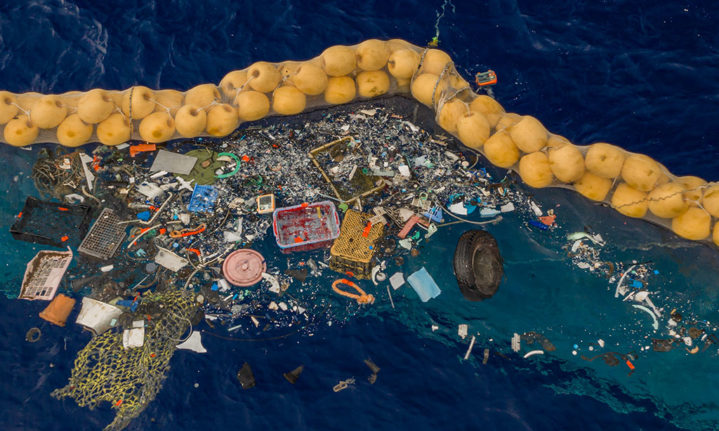The Ocean Cleanup Project, founded by young Dutch scientist Boyan Slat announced on 2 October that it has an operational cleanup system that is finally catching plastic in the Pacific. Launched from Vancouver in June, System 001/B is The Ocean Cleanup’s second attempt to create a working cleanup system.
After a year of testing, the giant cleaning contraption is making headway by collecting ocean trash in Great Pacific Garbage Patch. This patch is the largest accumulation of ocean plastic in the world (of the five offshore plastic accumulation zones) and according to a scientific report when last sampled it was estimated that it comprises more than 1.8 trillion pieces of plastic that weigh an estimated 80,000 tonnes.
Our ocean cleanup system is now finally catching plastic, from one-ton ghost nets to tiny microplastics!
Also, anyone missing a wheel? pic.twitter.com/Oq0rkXO3TH
— Boyan Slat (@BoyanSlat) October 2, 2019
Alongside a photo of some of the rubbish, including a car tyre, Slat tweeted, ‘Our ocean cleanup system is now finally catching plastic, from one-ton ghost nets to tiny microplastics! Also, anyone missing a wheel?’
A 600-metre long free-floating boom with a net skirt is using the natural forces of the ocean to passively catch and concentrate the plastic which is then removed by ship and taken ashore for sorting, recycling and disposal.
In addition to collecting plainly visible pieces of plastic debris, as well as much larger ghost nets associated with commercial fishing, the latest system has also successfully captured microplastics as small as 1mm – a feat the team was pleasantly surprised to achieve.
“After beginning this journey seven years ago, this first year of testing in the unforgivable environment of the high seas strongly indicates that our vision is attainable and that the beginning of our mission to rid the ocean of plastic garbage, which has accumulated for decades, is within our sights,” said Boyan.
In case you missed it, here is a short recap of our announcement today. pic.twitter.com/bGhrkty5W6
— The Ocean Cleanup (@TheOceanCleanup) October 2, 2019

















